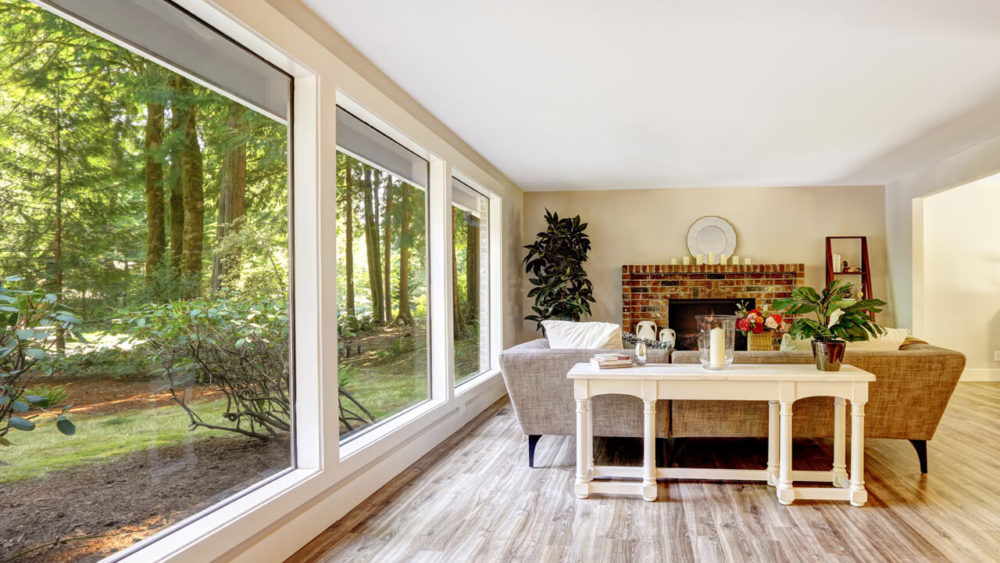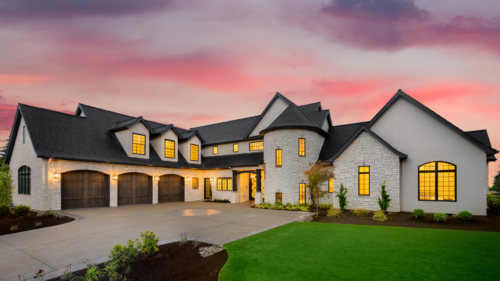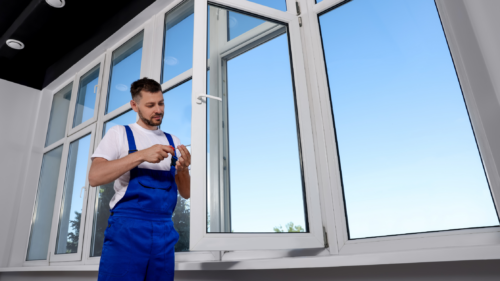If you’re in the market for a new window, you may have noticed that there are many different options. With all of these choices, it can be hard to know what is the best option for your home. That’s why we’ve put together this handy guide comparing some of the most popular replacement windows on the market today. When looking to install new windows in your home, the cost per window can range depending on many factors. This includes the brand of window, the design, size, and number of windows your home requires. This guide is designed to help you choose the best windows for your home, giving you tips on how to save money, compare the best brands and tips for finding the best local installers.
On average, you could be paying about $500 for each window. On the other hand, you can get away with paying as little as $50 or as much as $2,000 for a single window. Other factors you need to take into account include labor costs, repairs and framing, exterior trims, and window size.

Average Window Pricing Based on Brand and Type
If we consider all sorts of types and materials in window replacement, you could be spending anywhere between $50 and over $1,500. Besides the cost of materials, you’ll be paying an average of $200 on labor per window.
Before you buy a window, be careful to check the window’s look, function, and size, to make sure that it’s what you want. We’ll list the most common types and go through them in detail. Remember that the following prices are only for materials.
- Single-hung windows cost between $100-$400
- Double-hung types cost $150 to $650
- Casement types are for $200 and $1,400
- Picture type costs between $300 and $1,200
- Folding or sliding windows cost from $150 t0 $800
- Custom designs are almost always over $1,000
- Storm windows are between $50 and $300
- Bay and bow types cost $1,000 and up
- Pocket window costs vary
Single-Hung Window Replacement
This style is suitable for old-fashioned houses because of its classic look. It’s popular because of its vertically-opening style. However, only the bottom pane, also called a ‘sash,’ can slide vertically. Make sure you only use them on the ground floor since cleaning it from the exterior will require you to lean out the window to reach the upper sash.
Double-Hung Window Replacement
Double-hung windows look the same as single-hung windows, with the exception that both the lower and upper sashes can move. You can open both sashes to increase circulation. Sure, you don’t get any more total open area than with a single-hung window, but a lower and higher opening allows efficient circulation. You can get these windows upper floors as well – cleaning is easy because both sashes lean inward for better safety.
Casement Window Replacement
With a higher price range, this hinged type opens similar to a door, but the price depends on the material type and size. Casement styles come in two sub-types, the awning, and hopper. The awning is hinged to the top while hoppers are attached using bottom hinges.
Casement styles open outwards and inwards, depending on the placement. Contractors usually fix them in basements or on ceilings. Casement windows open with a crank that also serves as a lock, but advanced models come with separate locks for additional security. The crank mechanism prevents it from blowing open or shutting close. It offers the most air ventilation since it swings away from the frame completely.
Picture Window Replacement
As the name implies, picture windows are fixed in place, while some come with a sliding panel for ventilation purposes. These don’t have specific sizes, so your contractor will have to opt for custom sizing.
Folding or Sliding Windows
Folding type windows costs, including labor, can range between $500 and $900 per linear foot. Meanwhile, sliding windows can cost up to $800 per window. This type includes two sashes; one sash slides over a stationary one horizontally. For bigger spaces, homeowners prefer sliders. This type allows enhanced views with smaller cases and sills. Users can easily remove the top pane for maintenance and cleaning. Nonetheless, cleaning will require leaning out to a certain extent, so this type is best installed on the ground floor.
Custom Replacements
Custom window replacements always cost more than a regular type, which explains why they often start at $1,000. Custom designs, installations, and sizes are usually implemented in older homes that were built before standard sizing was implemented.
Bow and Bay Window Replacements
Bow window replacements cost between $1,000 and $4,500. These are similar to bay styles but have at least five panes rather than three. However, they don’t extrude as much as bay styles, so they deliver less extra square footage. Nonetheless, they provide more window area and, consequentially, more light.
Pocket Window Replacement
Just like with picture windows and custom windows, the prices of pocket windows vary greatly since most of the work involved requires customization to a certain extent. A pocket window replacement uses the current frame and takes off the old glass. Homeowners get a new fit custom made, so it slides into the frame opening. This type doesn’t take much time to install, but it limits visibility because the design is essentially one frame inside of another.
Other Factors That Can Affect Your Cost
Besides the costs of materials and labor, remember that extra perks, like aesthetic additions, can end up costing a lot as well. If you end up getting improvements, your quote can look very different in comparison to the average estimate.
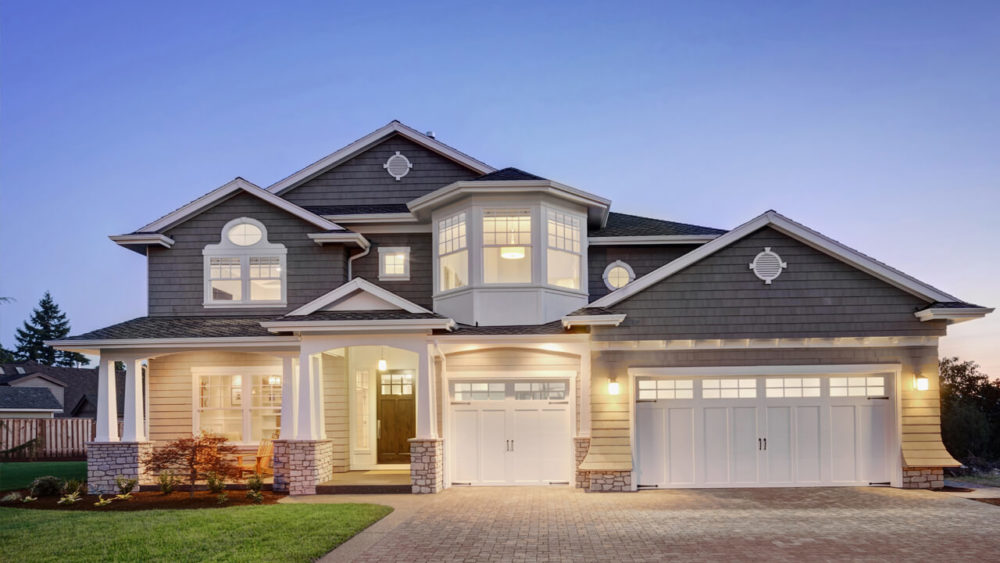
Adding Grilles or Grids Between the Glass
Grids Between Glass, also known as GBG, is when your contractor installs matching grids between the glass panes in your window. You don’t have to worry about leaks because the exterior and interior glass feels smooth. With this feature, you get the unique appeal of traditional windows, with the additional benefit of easy cleaning. Don’t worry about paying for grid installation, because the grilles or grids come pre-installed in the glass. While this glass is more expensive, you don’t need to clean around them.
Simulated Divided Light Grilles / Grids
In simulated divided light grids or grilles, the grilles are stuck to the window’s exterior on the side facing indoors, as well as outdoors. This gives an authentic look to your windows and may even be required if your property is located in a historic district. Unlike traditional versions, this doesn’t have multiple panes of glass.
Upgraded Hardware
You can opt to have hardware upgrades like satin nickel or oil-rubbed bronze added to your windows while manufacturing.
Using Impact-Resistant Glass
If you live in a coastal area that’s prone to storms, you may need to get your windows replaced with impact-resistant glass. Based on where you live, this may be a default requirement. But aside from having a safety benefit, impact-resistant glass reduces noise levels as well.
Jamb Extensions
If your selected window design doesn’t have a thickness that aligns with your home’s walls, you can opt for jamb extensions. Your window manufacturer can add extra depth to your windows’ frames for a clean look.
Opting for Nonstandard Colors
One of the simplest examples of customization is nonstandard colors. Usually, window manufacturers have a color palette of an average of three colors that can go as high as six, but even as low as two. However, if you want a nonstandard color like terracotta, you can have them customized.
Pre-finished Wood on the Inside of Wood Windows
If you’re getting wood windows but want the wooden frame on the inside to match your interior décor, you can get the windows treated. You can have the manufacturer paint or stain the wood with a tint of your choice.
Getting Triple Insulated Glass
In most cases, double insulated glass is the norm for energy-efficient windows, but some homeowners prefer to go the extra mile to save on utilities. Despite costing much more, triple insulated windows don’t provide as much in savings.
Commonly Used Window Materials
When it comes to material, you have to choose between different materials, and it’s not as easy as picking the cheapest one. In the end, you’ll need to consider what will look best for your home. You’ll be spending somewhere between $75 and $1,500, and that’s just for a window – we’re not talking about labor and installation costs. Materials include vinyl, composite, aluminum, fiberglass, and even wood. Not to mention, if your house has large windows or requires customization, you could be paying an additional quarter of the price.
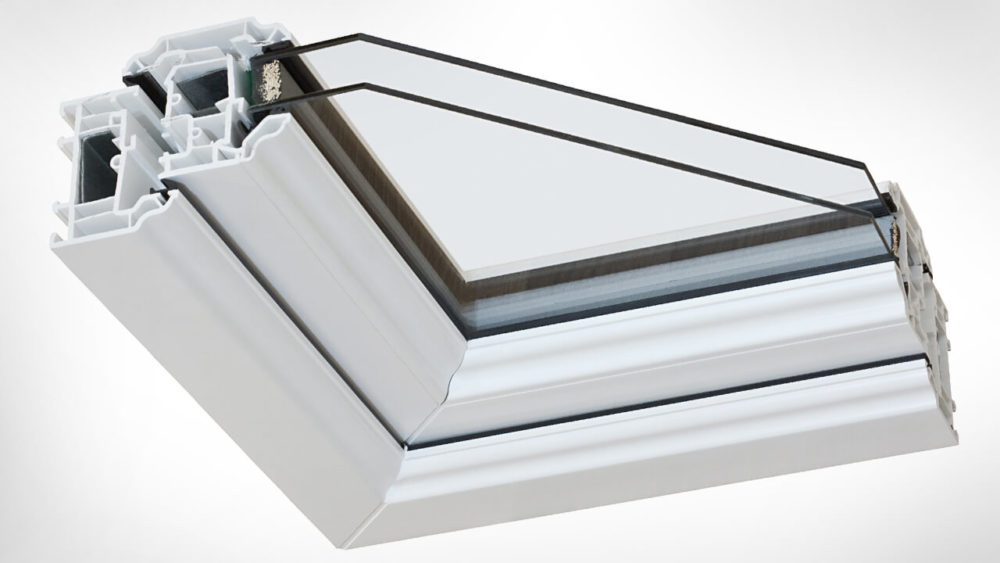
Vinyl
So let’s start off with vinyl, which is the most popular option for window replacements. The cost for a single-window will range somewhere between $100 and almost $1,000. But if you have a bow or bay-type windows with decorative elements, the price can go up to $2,500. The benefit of vinyl windows is that they’re cheap, energy-efficient, and highly durable.
Wood
Standard types of wooden windows range between $150 and $1,300. The great thing about getting wooden windows is that you get a classic look that suits the vintage architecture. If your home is old and has a high value because of its classic style, getting wooden windows will help in maintaining your property’s value.
More importantly, if your home is located in a historic neighborhood that includes various landmarks, you may be required by the board to get replacement wooden windows to retain the community’s aesthetic value.
Fiberglass
If you want to replace your windows with fiberglass, they’ll cost you around 15 to 30 percent more than vinyl windows. That means you end up paying somewhere around $500 and $1,500 or more for a window.
The benefit of getting fiberglass is that they’re far more durable than vinyl, except with the same insulation abilities. Since homeowners would be paying a much higher price for just about the same benefit, fiberglass isn’t a common option.
Aluminum
Aluminum is the most affordable material on the list, but it has its disadvantages. Ranging between $75 and $400 for a single window, it’s not very insulating, so it’s less popular for homeowners concerned with energy efficiency. Despite being very cheap, it doesn’t share the same popularity as vinyl. Of course, that doesn’t mean that some homeowners don’t get aluminum windows; they tend to opt for a larger or high-end variety, which can cost them over $1,200 for each window.
Composite
The cost for composite windows ranges between $300 and $1,200. It’s a mix of wood fibers and PVC polymers. The unique material combination helps in creating an attractive and low-maintenance frame. The benefits of composite windows are that they’re far more durable than wood or vinyl, have a classical wooden appearance, and don’t require much maintenance.
Commonly Used Window Brands
When it comes to window units, some of the most common names among homebuyers are the following.

Royalty Windows
Based in Illinois, Royalty Windows offers a range of products to homeowners looking to replace their old ones. Their product line includes Vinyl Windows, double-hung windows, and casement windows.
Pella
Pella offers homeowners with plenty of choices with regard to roofing frame materials and even designs. When it comes to frames, you can choose between vinyl, fiberglass, and wood. In terms of design, select between
- Awning windows
- Casement windows
- Single-hung windows
- Double-hung windows
- Bow or bay windows
- Sliding windows
- Specialty, special shape, or custom windows
In terms of variety, Pella is definitely a well-renowned competitor in the market. Nonetheless, they do have a few pros and cons.
Pros
- Their products are advanced and tech-savvy
- Enormous line of product options
- Leading brand for energy efficiency because they meet Energy Star standards in all states
- Innovative designs such as their retractable screen on casement-style windows, Integrated Rolscreen
Cons
- They don’t offer enough color variety on certain types of product
- Not as many materials to match their options
- High prices compared to other brands
- Limited Warranty: 10 years for non-glass products and 20 years for glass products
Anderson Windows & Doors
Contractors compare Anderson with Pella more than any other window manufacturer, mainly because both brands offer immense variety to homeowners looking for a great deal. Anderson Windows & Doors offers a variety of windows differentiated by series, frame material, and design. In frame material, they offer
- Fiberglass
- Aluminum
- Vinyl
- Composite, sold under the name FiberX®
- Wood
They offer a plethora of designs like
- Single-hung
- Double-hung
- Picture
- Pass-through
- Gliding
- Casement
- Bow and bay
- Awning style
Not to mention, their products are in different categories based on series like the E-Series, A-Series, 400 Series, 200 Series, and 100 Series. At the same time, however, you should be prepared to address certain pros and cons.
Pros
- Extensive range of materials to choose from
- High rated efficiency: named an Energy Star Partner of the Year in 2019
- Sustainable options proven by Green Seal and LEED qualifications
- You can transfer the limited warranty to the next homeowner
- Generally lower prices (but not that low)
- Plenty of color options
- Specialty window ranges
- A vast range of window designs
Cons
- Although their prices are lower than Pella’s, prices are still in the premium range
- Only five series of window products while Pella offers seven
Marvin Windows
Marvin Windows categorizes its products based on unique collections as well as styles. Their collections include the Marvin Signature™, Marvin Elevate™, and Marvin Essential™. The windows are made from Ultrex fiberglass. Thanks to their high-quality construction, Marvin windows expand in a way similar to glass, without becoming unstable. Their designs include
- Awning
- Tilt and Hopper
- Bow and bay
- Specialty shapes
- Casement
- Sliding
- Corner
- Single-hung
- Double-hung
- Picture style
You can choose between materials like wood, extruded aluminum, high-density fiberglass, and pultruded fiberglass. At the same time, remember that there are pros and cons of every brand, and the same applies to Marvin Windows.
Pros
- Some product likes like the Integrity and Marvin lines can be installed yourself
- Windows come in special sizes
- Low-maintenance windows that don’t need to be repainted
- Excellent energy efficiency
Cons
- You need to call a professional to install windows from their Infinity line
- Expensive compared to other windows
Ply-Gem
Ply-Gem sells numerous exterior building products like windows, doors, siding, skirting, and railing. They offer unique designs for the new construction market, like aluminum-clad, wood composite, wood, vinyl-clad, and vinyl windows. On the other hand, they provide aluminum-clad, aluminum, and vinyl windows for replacement markets. Despite being a relatively old brand, Ply Gem has its advantages and disadvantages.
Pros
- They offer numerous accessories for easy and high-quality installation
- Homeowners can scour through different wood-grains, colors, grille patterns, operating styles, and shapes when selecting windows
- Their products are low-maintenance because of durable and rot-resistance surfaces
- Great hardware makes their windows convenient to operate and clean
- Reliable energy efficiency
Cons
- Not many material options for homeowners who want a replacement
- You may have to purchase extra accessories for installment
Alside Windows
Alside windows come in a variety of different styles, from contemporary to traditional. Their range of customization options includes numerous glass styles and grid patterns that enhance the appeal of your windows. When it comes to window styles, customers can choose between specialty windows, picture windows, bow and bay, awning, sliding, and casement windows. Despite being among the most popular window replacement provider in the country, there are some pros and cons to the brand.
Pros
- Alside windows come with a lifetime guarantee
- Come in a variety of styles
- Energy-efficient designs that save you money
- The website allows you to see how a window will look in your home
Cons
- Not many material options for replacement windows
Choosing The Best Windows For Your Home
So how does one go about choosing the best windows for their home? The final decision requires that you consider numerous factors. Let’s say that you want to get windows replaced, so even the reason for replacing them can impact your decision; you may want to get new windows because the old ones are broken, or simply get them replaced to conserve more energy. In short, there are no right windows, and it ultimately comes down to your needs and budget.
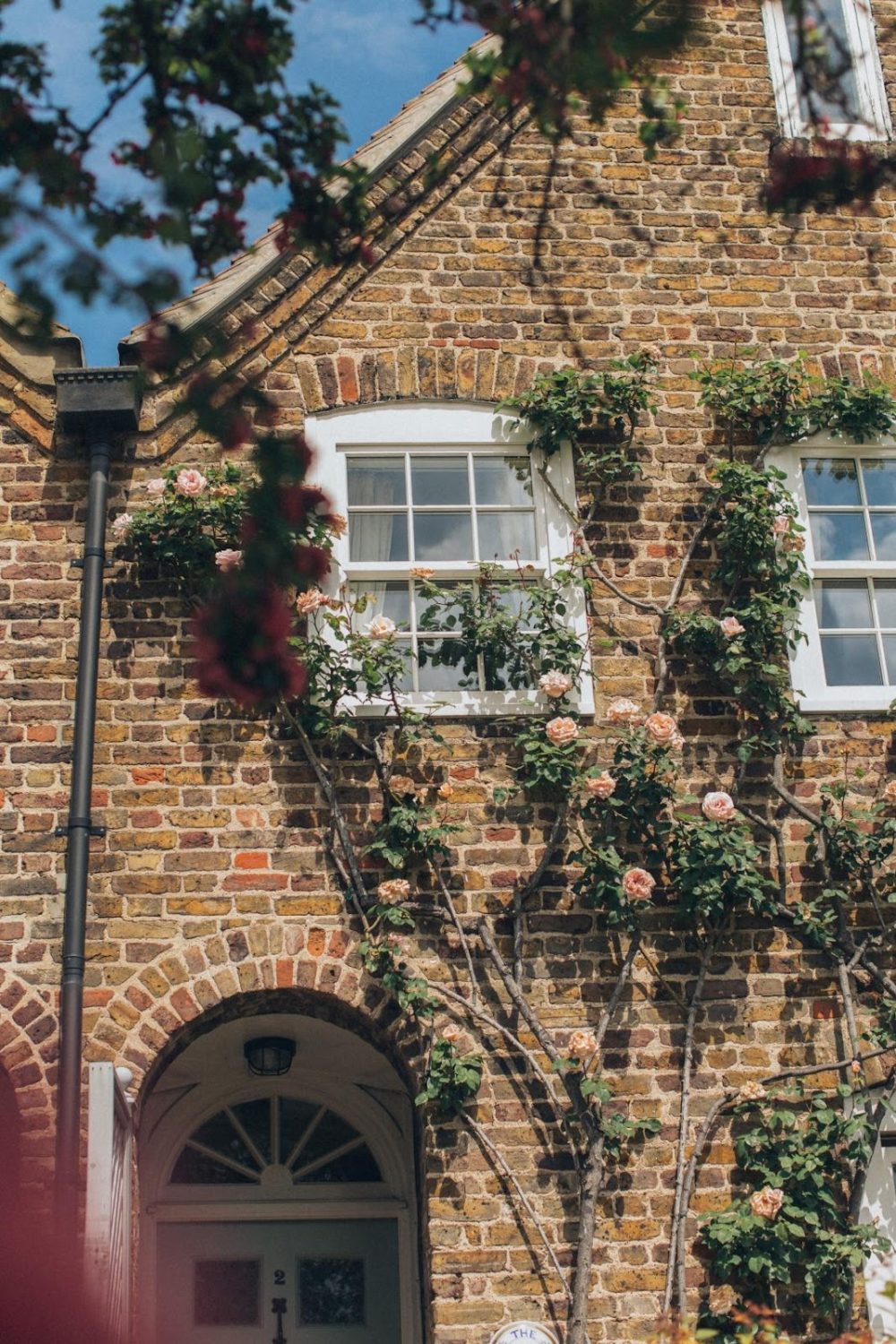
What Kind of Architecture Does Your Home Have
While replacement windows are a great idea for any homeowner needing greater energy efficiency, it’s important that you stop and think about the property’s character. Is it an old-fashioned home with classic architecture? If so, then replacing its windows can negatively impact its value.
Usually, the key point in such situations is to add and not subtract from the existing window. For example, adding an effective storm window over the current wooden window can help you get the combined energy performance of an advanced window.
Why Would You Need to Install New Windows
Let’s go over some of the reasons why homeowners consider getting new windows.
Because of Single-Pane Glass
A major reason for needing window replacement is that your current windows have a single-pane glass or even conductive sashes with frames. Construction experts advise homeowners that cheap and energy conductive windows require replacement.
Your Windows are Old
Besides efficiency concerns, it’s entirely possible that your windows have grown old, so they’re in bad shape. This is usually the case with older homes that haven’t had window replacement in a long time. Broken or cracked windows can lead to infestations, humidity concerns, and even water leaks. A rotting frame or cracked pane are a few of the reasons in this category.
Your Windows Aren’t Safe Anymore
Windows are supposed to be safe by providing a means of ventilation, and in the case of emergencies, a way to escape. But when they pose a safety issue, you should replace them. For instance, windows that don’t entirely shut or open, or are weak due to a lack of maintenance, need to be replaced. Moreover, if your house has rooms on the upper floor with windows that don’t open properly, you should replace them with working windows and keep a convenient fire ladder near it. This will help you use windows as a fire exit during an emergency.
Now that we’ve gone over some of the possible reasons for replacing your windows, it’s time to consider certain factors before deciding upon a particular window.
Choosing the Frame
To begin with, you have to choose an energy-efficient frame. Most homeowners think of wood as the best frame material because it allows less heat and cold transfer as opposed to metal. But that doesn’t mean that wood is your only option for a window frame that looks out for your utility bill. You can select from a range of materials for window frames, each of which has its pros and cons.
Fiberglass
Similar to composite, fiberglass windows are a combination of polyester resin and glass fibers. However, fiberglass has its own category, since the term ‘composite’ describes the material made from wood pulp and plastic.
Fiberglass is comparatively expensive than other windows with the same features, but experts argue that they offer plenty of benefits. They’re highly energy efficient due to low thermal conductivity and among the strongest materials in the market. You can get fiberglass repainted numerous times, unlike vinyl windows. Moreover, they don’t warp or twist like wood and vinyl frames.
Composite
Manufacturers make composite material using a combination of plastic resins and scrap wood shavings, so they’re able to copy the appearance of wood without the need for as much maintenance. More importantly, because the resin used to manufacture it comes from recycled plastic, composite material is rather eco-friendly.
Vinyl
Vinyl, despite its low price tag, isn’t a ‘cheap’ material. If the contractor adequately installs and constructs a vinyl window, it can be practical in terms of energy efficiency, which is mainly thanks to tight construction and insulated glass that helps eliminate air leakage. The only downside is that you get a limited number of color options, while some homeowners don’t like the way vinyl windows look on their homes.
Wood
When it comes to insulative-value, wood is the best option, but the downside is that they require immense maintenance than aluminum and even vinyl frames. Since wooden windows can rot, these aren’t the best option if you live in an area prone to rainy or humid climate. If you can afford the upkeep, a wooden window can last long enough. Nonetheless, remember that original windows in older homes are made using the best type of wood and high-quality cuts.
Aluminum
Although they’re not the best performing material when it comes to heat loss and transfer, aluminum is plenty effective for a humid climate. Not to mention, thanks to their tensile strength, they meet coastal building codes established in areas susceptible to hurricanes.
Choosing the Glass
Sure, the frame is important in maintaining a window’s energy-efficient status, but in the end, all the buzz is about the glass. According to industry experts, most homes, whether it’s a simple double-floor structure or a project worth millions of dollars, benefit from the same sort of windows. Regardless of homeowners’ budgets, they ask for the same thing: low-E glass double-pane windows with a vacuum seal and argon fill.
On average, this costs an additional $40 per window, but it ends up providing a significant return on investment by reducing utility bills. If you make further additions, like using denser glass that offers more insulation or using triple-pane glass, you’re only increasing costs and not getting as much return in terms of efficiency.
So what does one get with the above-mentioned glass option? Low-E glass, double-pane windows with vacuum seal and argon filling provide much more insulation than single-pane windows. In the summer, these windows protect the inside of the house by keeping heat from leaving through the window during colder months. These types of windows strike a balance between value and efficiency.
On a similar note, plenty of homeowners think that triple-pane windows are the way to go when it comes to energy, but they’re only most effective for areas prone to harsh winter climates. And at the same time, they limit light transmittance and window visibility.
How To Know A Window’s Energy Efficiency
To know a window’s energy efficiency, just check the glass to know about its energy efficiency features. Window manufacturers that are part of the voluntary Energy Star Program display stickers stating energy ratings on their products. The ratings are from the National Fenestration Rating Council, and manufacturers need to meet certain standards to qualify for an Energy Star status.
- The U-value rates how resistant a window is to heat loss
- The SHGC, which is the solar heat gain coefficient, measures how much heat passes through the glass and enters the home
In terms of both the SHGC and the U-value, lower numbers mean better window performance.
You can also opt for UV-repellent film for extra UV protection. Manufacturers use it to tint windows because it can’t be seen by the naked eye and helps preserve paint while keeping the home cool. Tinting works best for homes based in hot regions like the south and southwest because it provides plenty of savings.
Deciding the Design
In windows, transoms are often fixed parts that only serve aesthetic purposes, but some manufacturers are producing functional models that open up to allow fresh air inside. Instead of adding fixed windows, opt for functional windows because they add more depth, need a deeper casing, and look appealing. For instance, functional transoms look better than traditional ones because they don’t look like a simple glass square on a wall with a frame.
If you’re looking for windows that are environmentally beneficial, impractical designs, like circles or sunbursts, which don’t open, aren’t a good option. Of course, certain designs of windows perform moe effectively, with common types being:
Casement Windows
These are a popular choice where strong winds tend to blow windows open and shut. Since they are designed with a crank that opens, closes, and locks the unit, they seal themselves shut when strong winds blow towards your house. But you should still get the seals and hinges maintained to ensure prolonged efficiency and stability.
Picture Windows
Traditional picture windows don’t open, and they come in a variety of sizes and shapes. Nonetheless, they can still prove efficient, especially if you opt for a sliding model. Opt for glass with a high energy efficiency rating and make sure its gas-filled double-pane glass.
Double-Hung Windows
Meanwhile, double-hung windows are prevalent in prewar buildings, used as the traditional window unit in most homes. These are highly efficient but aren’t the best option for regions with extreme climates because air can enter from between the two sliders.
Ensuring Proper Installation
Regardless of how expensive of a window unit you buy, it won’t function effectively if your contractor doesn’t install it correctly. When selecting a contractor, make sure they don’t use too much sealant or expanding foam in getting the job done. Such materials lack waterproof properties, so they’ll cause issues in the future. If your area is prone to rains throughout the year, waterproofing the window before installation, which is completed a long time before the window is set to be installed, is an ideal option.
The cheapest phases of window installation, like flashing and adequate caulking, need to be done effectively. Otherwise, consequential water leaks can cause an array of issues (that could have been prevented easily) for both the homeowner and the builder.
Selecting the Best Contractor for the Job
A crucial aspect of getting the best window replacement is that you hire a reliable contractor. But it’s not like you’re always looking for great contractors until it’s time to get your windows replaced. It’s not as easy as choosing the first name that comes up on the results page; you need to consider a variety of factors since their services could very well end up impacting the value of your home.
We’ve compiled a list of important questions you should ask a contractor before signing them for the job. Remember, if they have a good enough reputation, they’ll be more than happy to answer any questions you may have. Just as it’s common for homeowners to get several quotes for any renovation or replacement job, it’s just as important to ask these questions from multiple contractors. In addition, we’ve pointed out some critical aspects to consider as you finalize the terms for a job proposal contract.
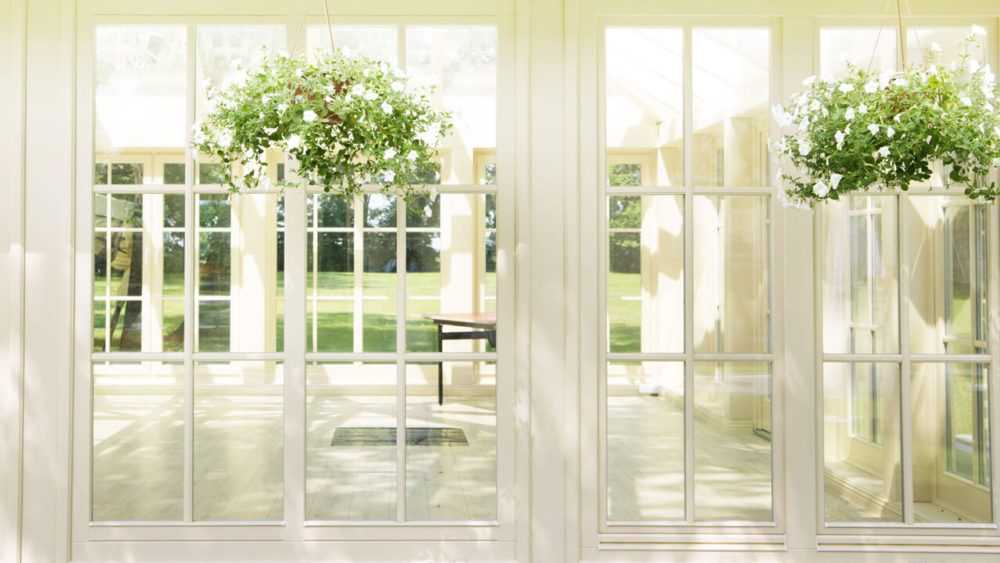
Do I Really Need to Put So Work Into Finding a Contractor?
Sure, it sounds like a load of work, but being confident that you selected the right people for the job gives you peace of mind that your investment was worth it, and you’re retaining your home’s value.
Questions You Should Ask Your Contractor
Interview the contractor’s representative, and make sure that they’re enthusiastic in giving you the information you require. They should also be knowledgeable about the different options the company offers.
Does the contractor offer insurance?
Your contractor needs to carry workers’ compensation and liability insurance, so you stay protected in case an accident occurs. You can verify their insurance status by checking their insurance certificates for general liability and workers’ compensation.
Contractors also hold other sorts of insurance, such as auto, life, and health insurance for its workers. If the representative assures that the company holds insurance, they may be referring to these. To avoid the confusion, ask the representative to share proof of workers’ compensation insurance and general liability insurance for window replacement projects.
Remember that contractors that comply with fall safety guidelines to prevent falls and carry insurance have higher project costs. This can explain the difference in prices between contractors that follow guidelines and others that don’t; you’ll have to pay a premium to avoid a lawsuit in case of an accident, which is a fair deal. Be careful not to hire uninsured contractors just because they offer lower prices. Insured contractors need to pay expensive premiums that can raise costs from 20 to 100 percent based on the state.
Some of the reasons why a contractor doesn’t carry insurance are
- They aren’t a full-time contractor
- They’re self-employed or work as a partnership
- They recently started providing services
- Can’t afford to pay insurance premiums
In the end, it’s your choice to determine whether paying for an uninsured contractor is worth the risk.
How long has the contractor been offering services? Where are they based?
It’s important to know how long the contractor has been offering services in the field. This gives you better knowledge about their experience and their skills. You should also ask where they’re based; the closer they are to your neighborhood, the better. Ideally, you should hire a contractor with a nearby office – this ensures quick responses and timely service.
Do their subcontractors and employees carry a license?
Contractors and plumbers need to have a valid state or city license to provide services to customers. Each state has its own licensing authority, so when you ask a contractor if they’re licensed, you’re asking if they have a license from the state’s respective regulatory body. Most, but not all, states require contractors to possess a license.
If your state requires contractors to have a valid license before performing work, they need to pass a written examination and complete a set number of hours. Check your local licensing body for their requirements and make sure that any contractor you consider fulfills them.
It’s likely that the representative will respond to your question by saying that the company has a business license, but this is only a tax requirement and tells you nothing of their workers’ skills. Make sure to specifically ask them for proof of their contractors’ license from the local licensing authority.
Check references and referrals from previous jobs
You can’t make an informed decision before looking at references and their work from previous projects. Hence, ask their representative for pictures of completed projects. If they don’t have pictures, ask for a list of a few recent previous customers along with their phone numbers. You can call these referrals and ask them for feedback.
Do they offer a warranty?
To assure customers of their skill, many businesses provide contractor workmanship warranties, which are valid for at least a year. Carefully compare warranties and keep in mind that a longer warranty doesn’t imply that it’s more valuable. Rather, check if the contractor will comply and stand with it. You can ask previous customers about information like
- If the contractor completed the job on schedule
- If they were responsive when the customer asked for changes or further details
- Was the contractor considerate of the customer’s interests
- Would the customer call the contractor trustworthy
Your contractor should offer a warranty for their workmanship while window unit manufacturers should provide a warranty against defects. Altogether, two warranties cover window installation for the job. A major reason for preferring a near-term warranty is that issues regarding the material or workmanship surface quickly.
Check the contractor’s reputation in addressing customer complaints
Before any problems arise, you’ll want to know how your contractor responds to them in the event that they do. Ask them for referrals from a project that involved the customer who has a complaint. In addition,
- Inquire if the contractor has lost a court case pertaining to a job
- Ask if any of their workers’ contractor license has been suspended
While speaking to concerned authorities, like the BBB (Better Business Bureau), find out if the contractor you’re considering has ever faced a complaint filed against them. It’s highly likely that they have. Find out how the contractor resolved the issue to learn more about their reputation.
Picking a Reliable Contractor
With so many factors to consider, it can seem like a challenge having to do it over and over again with numerous contractors to get the best quote. It would be far more convenient for homeowners to select their preferred contractors from a database of verified, licensed, and insured contractors. Looking up contractors on Contractorappointments.com is one way to go about this. This appointment generator helps contractors make sales by connecting them with customers. They allow customers to set up appointments with contractors offering services for solar panel installation, roofing, window replacement, and even gutter installation.
It’s simple to work with. As the customer, just book an appointment with your preferred contractor, meet with a representative, and if you’re satisfied, you can close a deal.
Evaluating Your Proposal Contract
Contracts can vary from one business to another. Experienced contractors tend to have longer and detailed contracts. Make sure to read this document carefully. Here are some of the questions the contract should answer.
Will they follow local building codes?
Check the contract to see if they follow local building codes and comply with regulations. Have they planned any inspections or included permit costs?
Do they offer extensive product choices?
Has the contractor offered you choices between different window units? Are these different products unique with respect to manufacturer and brand? Does the contractor reference the types of warranties that will cover window units?
Is there a rescinding period?
In your contract, during the rescinding period, the customer can cancel the contract without facing a penalty. In some states, a right-to-rescind clause is required. It’s usually a three-day period, but make sure to check with your local authorities to know if a right-to-rescind clause needs to be part of the contract.
Will there be a preliminary inspection?
Make sure that the contractor agrees to a pre-job inspection. With the supervisor, determine the condition of your home before they begin the installation. List down and take pictures of the equipment and landscaping conditions near the areas where the contractor will work. If there’s any furniture nearby, or windows on the walls, make sure to remove them. Prepare a checklist of different items and have the supervisor co-sign it as proof that both parties know the current condition of your home. After the job is complete, conduct a complete inspection to find out if you can make any claims for property damage.
Financing Options You Can Choose From
Although window replacement seems like a minimal job with respect to your property, it’s a major investment. Installing new window units can take a significant amount of time and eat out of your savings, implying that you need a lot of funds. But not everyone has such a large sum just sitting n their bank account, which brings us to financing options for window replacement.
Financing Programs from the Manufacturer
Some large manufacturers have their own payback plans to offer customers. This allows you to pay for window replacement products over a specific period. The benefit of this is that you know exactly how much you’re borrowing, and you go through a smooth process. However, there’s a big chance that some companies have very higher interest rates, so consider it carefully.
Bank Loans
The next option is to opt for a bank loan; these are a popular method to finance a home renovation, such as window replacement. The benefit of a bank loan is that you needn’t offer your home as collateral. At the same time, however, you deal with higher interest rates. You’ll also need a great credit score to be eligible.
FHA Loans
The Federal Housing Administration offers financing programs for homeowners who have to borrow funds for a renovation project. This includes window replacement and installation, which can cost them around $25,000 on average. In contrast to credit cards, these loans have lower interest rates. On the other hand, you’ll have to deal with a lengthy process. In addition, you might also have to keep your mortgage deed as collateral if you’re borrowing more than $7,500.
Credit Cards
If you lack sufficient funds to pay for window replacement, you can rely on your credit card. Many homeowners opt for this approach since contractors can offer a long period to pay in installments, without needing you to apply for a different credit line. Nonetheless, remember that holding too much debt on your credit cards negatively impacts your credit score.
Looking Out for Local Promotions
You can cut costs on window replacements in many areas, but very few of them involve not compromising on high-quality service or products. One way to do so without cutting back good service is to look for local promotions by contractors.
This brings us back to the topic of finding a contractor that’s reliable and offers great deals on their services. Contractorappointments.com is a good way to find deals on home remodeling and renovation projects. Not only does it make expensive home renovation projects a bit more affordable, but it also provides a database of reliable and licensed contractors to choose from.
The Average Return on Home Value
In contrast to the rest of your home, windows can seem like a small part as opposed to doors or even the floor. Hence, many homeowners ask whether replacing their old windows are worth the investment and if so, then how much of a return can it generate on their home value.
Generate a Return on Investment
For starters, replacing old and inefficient windows with energy-efficient models is the green thing to do. It allows you to save on utility costs like heating and cooling. Moreover, it means that you don’t have to worry about pest infestations and water leakages during storms. By eliminating humidity issues, new windows prevent problems like mold, which can negatively affect your home’s value.
But Does it Add Value?
In short, yes, it does. A report on remodeling and its returns show that if homeowners spend around $15,000 in window replacement, their home’s value could increase by $10,000 and above. Then again, you’ll have to select models and designs that enhance the appearance of your home and increase the amount of natural light coming indoors. If you pay the cost of low-E glass, your windows will effectively block UV rays and solar heat to prevent wood and furniture from fading.
If you add all the benefits and reasons you should replace your windows, it’s a no-brainer that if you ever decide to sell your home, new and efficient windows allow you to make more money. Nowadays, homebuyers find it much more convenient to purchase homes that are ready be move into, as well as equipped with advanced amenities.
Conclusion
Hopefully, this cost guide and comparison provides customers with the knowledge they need to make an informed decision when it comes to selecting a contractor, material, and design for window replacement.


